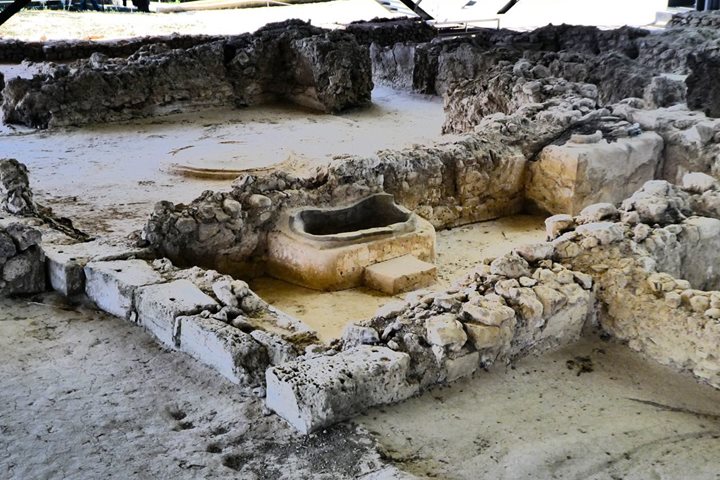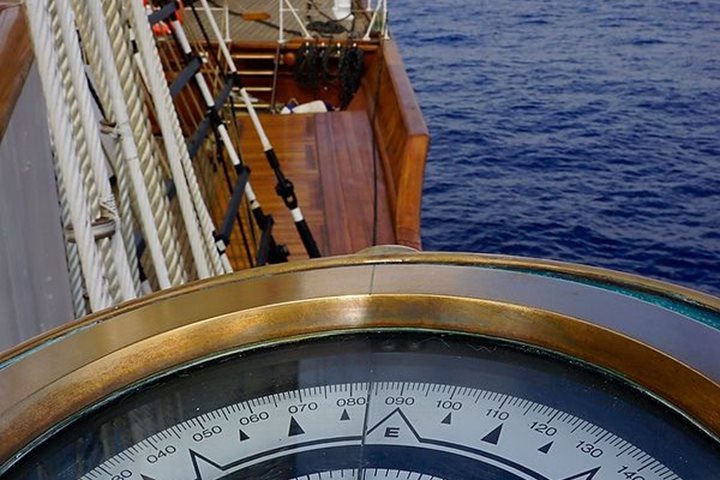At breakfast the Sea Cloud slipped past the imposing walls and towers of 16th century fortress—Castello Maniace and dropped anchor in the Porto Grande on the south side of the island of Ortigia. As our regular pier was under redevelopment, we tendered in on a localboat to the pier to clear past the Sicilian immigration authorities, temporarily headquartered in a small camper van, complete with a picnic umbrella. We split off in groups: some destined for a photographic walk with Massimo through the colorful fish and fruit market, while the majority of us headed off to the archaeological park where the theater and Roman amphitheater are located.
In the park our guides explained how the light ocean breeze we were enjoying this morning actually helped amplify the voices of the ancient Greek actors while they were performing in the in the 5th century B.C. theater before an audience of 15,000 people. The citrus trees, bamboo, oleander, and date palms in the botanical garden in the Lautumiae, a huge limestone quarry adjacent to the theater, provided a welcome respite from the bright sun in the theater and the Roman amphitheater.
After lunch aboard, we returned to the pier for a walking tour of Ortigia, a small island/peninsula (99 acres) that was once the heart of the ancient Greek city. The island is now connected to the mainland by three small bridges. The remains of the Temple of Apollo by the food market, the foundations of one of the original Greek city gates, and the fountain of Aretusa (one of nymphs of the goddess Diana) are the most visible remains of the ancient city. This is, by and large, a Spanish Baroque city as little remains of the medieval Arab and Norman city due to a massive earthquake in the early 17th century. The centerpiece of the Ortigia is the Duomo, the façade of which is a 17th century Baroque confection complete with saints in swirling robes and little putti trying to climb around and over the top of the central cornice. On closer inspection however, the central core of this building in actually the Temple of Athena that was built in 530 B.C. The ancient Doric columns are still very visible down the side-aisles. The arches dividing the aisles from the nave and the clerestories were added during the medieval period, the wooden roof and inlaid floors are from the early 16th and 17th century respectfully. The side chapel dedicated to the city’s patron, Saint Lucy was decorated in white and burgundy marble altar is from the first decade of the 18th century. Taken at a whole, one can learn about the whole architectural history of the Sicily by visiting this one building!
After the tour we had plenty of free time to explore the medieval alleys, ceramic shops, sample Sicilian pizza, or just have a glass of wine in the Piazza del Duomo to watch the local families come out for their evening stroll, children play on their bicycles, or kick their soccer balls around as they dashed excitedly across the polished limestone pavement.







